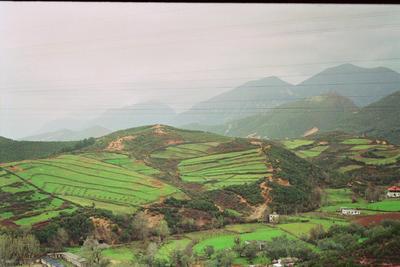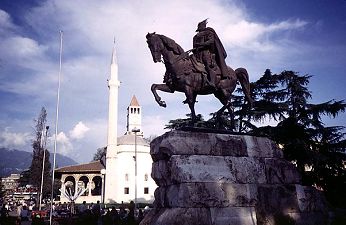 |
| [Scanderbeg Squarre] Skenderbeu is Albanian National Hero |
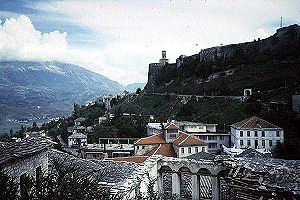 |
| [Gjirokastra] The Stone City |
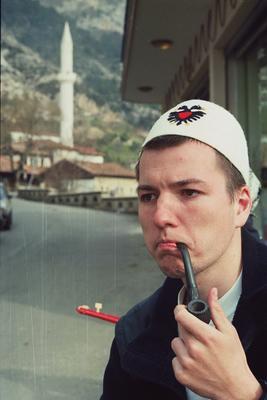 |
| [The similar of antic Albanian Boy] -by an Romanian-Hungarian ... |
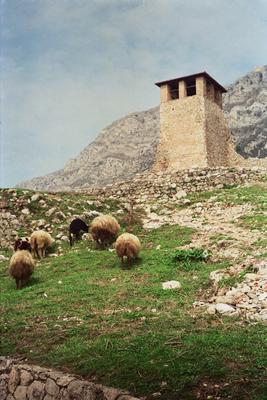 |
| [Kruja Tower Clock]-The city of National Museum of Scanderbeg |
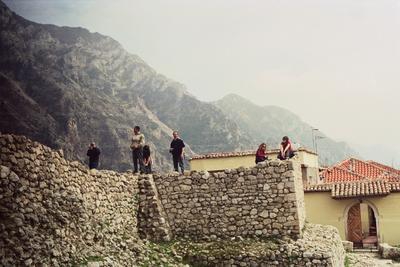 |
| [On the old walls of Kruja city] |
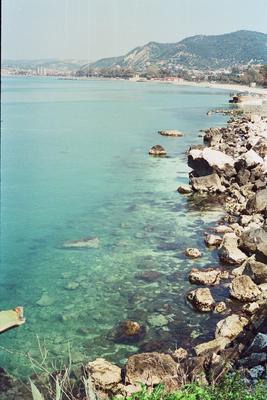 |
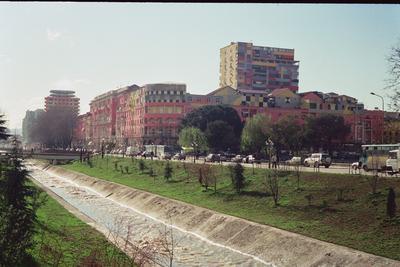 |
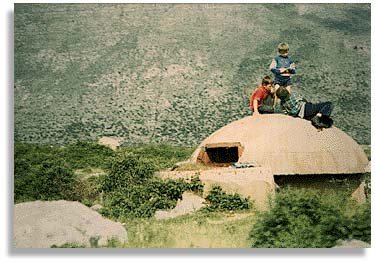 |
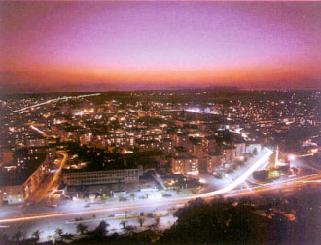 |
| [The view from Tirana River knowed like - Lana] |
| [The view from Rocky Beach of Vlora] |
| [The city of Vlora by Night] |
| [The albanian BUNKER-There are more then 650.000 of bunkers construited by a crazy dictator, like Enver Hoxha was (1945-1985) for a Crazy Imaginary War] |
| [Teraces with olives tree] |
| [WELCOME TO PAGE- ALBANIA IN FOCUS] |
| [Albania, a country where reality surpasses imagination...] |
| Scanderbeg Scanderbeg was appreciated as one of the greatest generals ever lived - and for his modesty. According to Holberg Scanderbeg never overrated his position, but stood up as an humble Christian Soldier [8] since he left the Ottoman army and abandoned Islam. One of the rare Holberg manuscripts (at the National Library in Oslo, Norway). This page is from the story about Scanderbeg - and is written by a scribe of Holberg's. Holberg himself wrote the draft - and the marginal notes in the final manuscript. Click the image to enlarge it. Writing about Scanderbeg Holberg took the work of Marinus Barletius (or Barleti) [9] as a starting point, but he formed his own judgment. Possibly, he had an aim of his own to pursue - to promote certain virtues and to discredit other ones. Holberg realized that Scanderbeg - with limited support - was capable of holding his ground against the Ottoman forces. Even more, he fought the enemy vigorously, defeated him and often put him to flight. Holberg took an interest in Scanderbeg because of his great military achievements against the Muslims. Here we have to bear in mind the Ottoman attack on Vienna in 1683 [10] - and the Habsburg attack on Kosova and Macedonia in 1689 [11]. At the time of Holberg the Ottomans still were to be considered a dangerous neighbour. From Marinus Barletius: �Historia de vita et gestis Scanderbegi Epirotarum Principis�. Click the image to enlarge it. True, the Ottomans had to give up against Vienna, but the Habsburgs had to withdraw from Kosova too, and that with the Patriarch Arsenije and many Serb followers. The clashes between the Albanian princes and the role of Scanderbeg Barletius - and Holberg - is telling about the clashes between the Albanian princes; we understand that Scanderbeg was the leading Albanian prince who could-and-would fight the Ottomans; he united the Albanian princes, but he was not followed unanimously, and some of the princes - from time to time - allied themselves with the Ottoman Sultan. Scanderbeg therefore also had to make alliances with foreign magnates - the Pope in Rome and the King of Naples. Scanderbeg was an outstanding general, but a master in political manoeuvring as well - and had to be, to uphold his stand. When he passed away in 1468, the Ottomans profited greatly - politically and militarily. Reading Holberg today Reading Holberg today is quite feasible for Danes - because of the precise language [12] - but difficult too, for it is not possible to adopt the political and theoretical standpoints. Some of his most important stands on common matters - on the other hand - remain valid. His critical approach has been an important inspiration for the posterity, but many of his conclusions have been abandoned - and his historical scepticism has been further developed. Today, the conflicts in the Balkans are not the same as in the time of Scanderbeg, nor as in the time of Holberg. The Albanians do not fight the Turks, on the contrary they cooperate in the military field. Furthermore, Albania is not involved in a religious or ideological strife between Muslims and Christians. And now, the agenda is to unite the European nations in the European Union for their common good - not to separate them. SEE MORE ABOUT SCANDERBEG ATFROSINA.ORG |
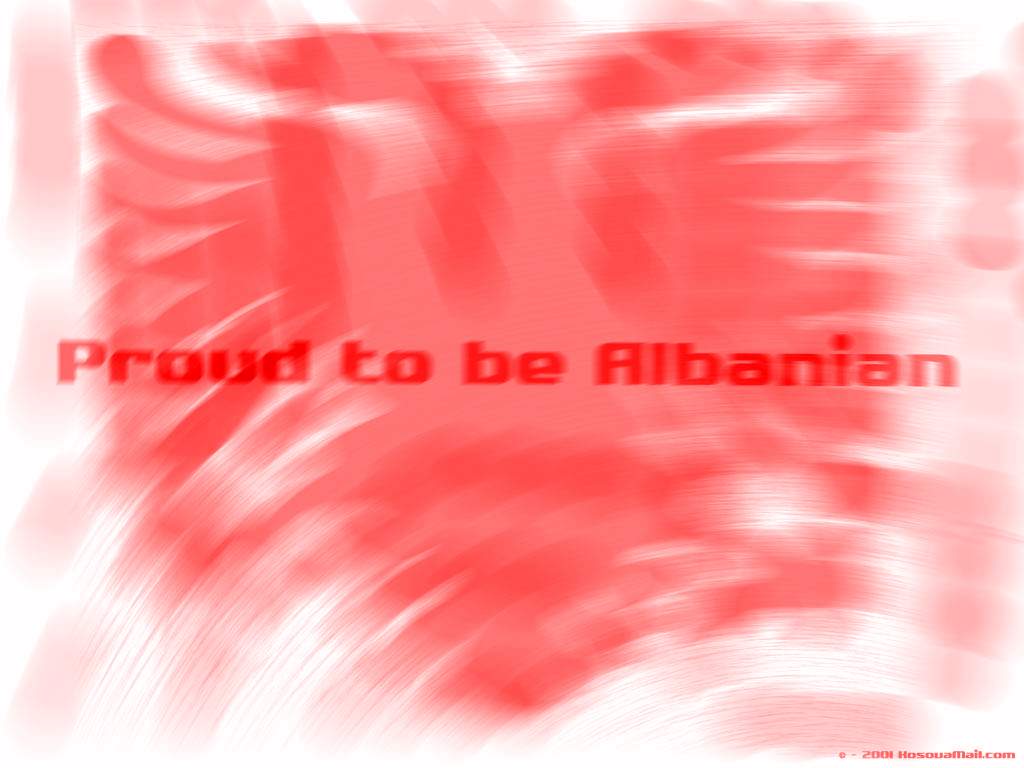 |
| [Mother TERESA] |
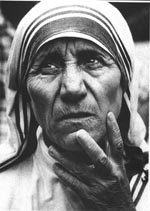 |
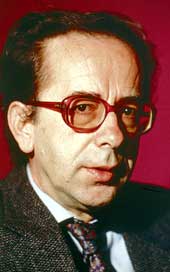 |
| [Ismail KADARE] |
| [TOP] |
| [SCANDERBEG] |
 |
| [Alexander MOESIU 1879-1935] |
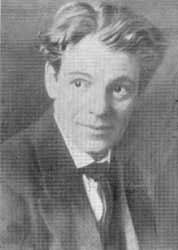 |
| [ALBANIAN HISTORY by PICTURES] |
| Scanderbeg on the English Stage In the 18th Century when the Ottomans were suffering reverses in Central Europe, there was a revival of interest in the earlier struggle of the 15th century Albanian national hero, Scanderbeg, against them in Albania. Not only did Scanderbeg serve as the subject for operas by Vivaldi and two French composers, Francouer and Lacepede, but he was also the hero in three English plays dealing with his defence of the fortress in Kruje against the forces of Sultan Amurith in 1450. The first to be written, but never performed, was Scanderbeg or Love and Liberty by Thomas Whincop who was rector of a London church. According to the preface to the play, which was printed in 1747, the reason for its non-performance was due to the difficulties encountered by his widow in getting a theatre to put on a performance, and to the "caprices" of theatre managers. An account of the life of Scanderbeg is given along with drawings of scenes from the play, one of which depicts Scanderbeg wearing a turban and mounted on a horse. Interestingly, the Albanian translator, Skender Luarasi, translated the text into Albanian in 1920, but it was not until 1967 on the eve of the 500th anniversary of Scanderbeg's death in January 1468 that it was published by the Naim Frasheri publishing house in Tirana. In 1733 William Havard (1710-1778) an actor and dramatist, son of a Dublin vitner, published his play entitled Scanderbeg. It was performed twice at the Goodman's Fields Theatre in London, but with little success. He faced allegations that he had stolen the plot from Whincop whose play was in the hands of the manager of Goodman's Fields. Havard is buried in the courtyard of St. Paul's, adjacent to Covent Garden, where his gravestone bore an epitaph written by the well-known actor David Garrick. The third and best of a rather poor trio of plays on Scanderbeg was The Christian Hero by George Lillo (1693-1739), son of a London jeweller, and better known in English literature for his domestic drama entitled George Barwell. Encouraged by the success of this latter work he ventured upon a more exotic theme in his play on Scanderbeg, but after four performances at the Drury Lane Theatre in 1753 it sank into obscurity, having met with a mixed reception. In the first night review of the play the theatre periodical The Prompter thought it was not to the taste of the English audience, but a later Account of the English Stage published in 1832 said it deserved a much better fate and was decidely the best of the three tragedies written on Scanderbeg. The above material was written and supplied by Peter Rennie of the Anglo-Albanian Association in London. |
| [TOP] |
| Scanderbeg [both: skan'durbeg] Pronunciation Key Scanderbeg or Skanderbeg , c. 1404?1468, Albanian national hero. His original name was George Castriota or Kastriotes, but the Ottomans called him Iskender Bey, and this was corrupted into Scanderbeg. The son of a prince of N Albania, he was educated in the Muslim faith as a hostage at the court of Sultan Murad II. The sultan showered favors on him and gave him the title bey and an army command. In 1443, when the Ottomans indicated they would attack Albania, Scanderbeg escaped to his homeland, abjured Islam, and formed a league of princes among the Albanian chieftains. He proclaimed himself prince of Albania. To resist the Ottomans under Sultan Muhammad II, Scanderbeg received aid at various times from Venice, Naples, Hungary, and the pope. He had success in these wars partly because of the rugged Albanian terrain and partly because he employed a mobile defense force using guerrilla methods. He withstood repeated attacks and forced the sultan to conclude a 10-year truce in 1461. Scanderbeg broke the truce in 1463 when Pope Pius II called for a new crusade. The pope's death (1464) forced abandonment of the crusade; Scanderbeg, left without allies, had to retreat to his fortress of Kroia. After his death the league dissolved, resistance collapsed, and Albania fell to the Ottomans. Scanderbeg's life is the source of many Albanian tales. The Columbia Electronic Encyclopedia, 6th ed. Copyright � 2003, Columbia University Press. |
| Mother Teresa ? Biography Mother Teresa was born Agnes Gonxha Bojaxhiu in Skopje, Macedonia, on August 27, 1910. Her family was of Albanian descent. At the age of twelve, she felt strongly the call of God. She knew she had to be a missionary to spread the love of Christ. At the age of eighteen she left her parental home in Skopje and joined the Sisters of Loreto, an Irish community of nuns with missions in India. After a few months' training in Dublin she was sent to India, where on May 24, 1931, she took her initial vows as a nun. From 1931 to 1948 Mother Teresa taught at St. Mary's High School in Calcutta, but the suffering and poverty she glimpsed outside the convent walls made such a deep impression on her that in 1948 she received permission from her superiors to leave the convent school and devote herself to working among the poorest of the poor in the slums of Calcutta. Although she had no funds, she depended on Divine Providence, and started an open-air school for slum children. Soon she was joined by voluntary helpers, and financial support was also forthcoming. This made it possible for her to extend the scope of her work. On October 7, 1950, Mother Teresa received permission from the Holy See to start her own order, "The Missionaries of Charity", whose primary task was to love and care for those persons nobody was prepared to look after. In 1965 the Society became an International Religious Family by a decree of Pope Paul VI. Today the order comprises Active and Contemplative branches of Sisters and Brothers in many countries. In 1963 both the Contemplative branch of the Sisters and the Active branch of the Brothers was founded. In 1979 the Contemplative branch of the Brothers was added, and in 1984 the Priest branch was established. The Society of Missionaries has spread all over the world, including the former Soviet Union and Eastern European countries. They provide effective help to the poorest of the poor in a number of countries in Asia, Africa, and Latin America, and they undertake relief work in the wake of natural catastrophes such as floods, epidemics, and famine, and for refugees. The order also has houses in North America, Europe and Australia, where they take care of the shut-ins, alcoholics, homeless, and AIDS sufferers. The Missionaries of Charity throughout the world are aided and assisted by Co-Workers who became an official International Association on March 29, 1969. By the 1990s there were over one million Co-Workers in more than 40 countries. Along with the Co-Workers, the lay Missionaries of Charity try to follow Mother Teresa's spirit and charism in their families. Mother Teresa's work has been recognised and acclaimed throughout the world and she has received a number of awards and distinctions, including the Pope John XXIII Peace Prize (1971) and the Nehru Prize for her promotion of international peace and understanding (1972). She also received the Balzan Prize (1979) and the Templeton and Magsaysay awards. From Nobel Lectures, Peace 1971-1980, Editor-in-Charge Tore Fr�ngsmyr, Editor Irwin Abrams, World Scientific Publishing Co., Singapore, 1997 This autobiography/biography was written at the time of the award and later published in the book series Les Prix Nobel/Nobel Lectures. The information is sometimes updated with an addendum submitted by the Laureate. To cite this document, always state the source as shown above. Mother Teresa died on September 5, 1997. SEE MORE AT MOTHERTERESACAUSE.INFO http://www.almaz.com/nobel/peace/1979a.html |
| [TOP] |
| ISMAIL KADARE Albanian writer, frequently mentioned as a candidate for the Nobel Prize in Literature, a leading figure of Albanian cultural life from the 1960s. During the terror of the Hoxha regime, Kadar� attacked on totalitarianism and the doctrines of socialist realism with subtle allegories, although as a committed Marxist he officially supported the liberation of Albania from its backward past. Among Kadar�'s best-known works is The General of the Dead Army (1963). In the story an Italian general is immersed in his absurd and gruesome mission in Albania. He never realizes that he is as dead as the fallen soldiers of past wars. "The bodies of tens of thousands of soldiers buried beneath the earth had been waiting so many long years for his arrival, and now he was here at last, like a new Messiah, copiously provided with maps, with lists, with the infallible directions that would enable him to draw them up of the mud and restore them to their families. Other generals had led those interminable columns of soldiers into defeat and destruction. But he, he had come to wrest back from oblivion and death the few that remained. He was going to speed on from graveyard to graveyard, searching every field of battle in this country to recover those who had vanished. And in his campaign against the mud he would suffer no reverses; because at his back he had the magic power conferred by statistical exactitude." (from The General of the Dead Army) Ismail Kadar� was born in the museum-city of Gjirokastra, in southern Albania. His father worked in the civil service. Kadare grew up during the years of World War II, witnessing the occupation of his home country by fascist Italy, Nazi Germany, and the Soviet Union. He attended primary and secondary schools in Gjirokastra, and went on to study languages and literature at the Faculty of History and Philology of the University of Tirana. In 1956 Kadar� received a teacher's diploma. He also studied at the Gorky Institute of World Literature in Moscow. In 1961 Albania broke with the Soviet Union, and finally with all other countries, including China. From the cultural standstill arose a new generation of writers, among them Kadar�, Fatos Arapi, and Drit�ro Agolli, who was for many years head of the Albanian Union of Writers, although his work was occasionally felt to be out of touch with the party line. In Albania Kadar� first won fame as a poet. Writers hostile to Hoxha suffered persecution. Kadare's attitude to the Hoxha regime was ambiguous. His first novel, Gjenerali i ushtris� s� vdekur (1963, The General of the Dead Army), is a study of postwar Albania and begins in a pouring rain. The general of the title is on a mission to Albania, years after the occupation and war, to dig up and repatriate the bones of his fellow soldiers, who had died in the country during World War II. "I have a whole army of dead men under my command," he realizes bitterly. Before completing his work, the general suffers a nervous breakdown in a wedding feast. Dasma (1968, The Wedding) was well received in Albania. The heroine of the novel, a young peasant girl, is rescued from a traditional arranged marriage by factory work. She meets and marries a man she loves, thus breaking the traditions. Kadar� served as a delegate to the People's Assembly in 1970 and he was given freedom to travel and to publish abroad. Kadar�'s Chronicle in Stone (1971) was praised by John Updike in The New Yorker as "sophisticated and accomplished in its poetic prose and narrative deftness". In K�shtjella (1970, The Castle), a story of Albania's struggle against the Ottoman Turks, and Ura me tri harqe (1978, The Three-Arched The Bridge), an account of the events surrounding the construction of a bridge across a river, Kadar� depicted the feudal Albania. After offending the authorities with a politically satirical poem in 1975, he was forbidden to publish for three years. In Broken April (1978), a story about the blood feud, Kadar� returned to one of his favorite themes - how the past affects the present. "Gjorg came out of the concealment and walked towards the body. The road was deserted. The only sound was the sound of his own footsteps. The dead man had fallen in a heap. Gjorg bent down and laid his hand on the man's shoulder, as if to wake him. 'What am I doing?' he said to himself. He gripped the dead man's shoulder again, as if he wanted to bring him back to life. 'Why am I doing this?' he thought." N�npun�si i pallatit t� �ndrrave (1981, The Palace of Dreams) was a political allegory of totalitarianism, set in an Ottoman capital. The central character is a young man, Mark-Alem, whose job is to select, sort, and interpret the dreams of the imperial populace in order to discover the "master-dream" that will predict the overthrow of the rulers. The basically humorous novel for others than the Albanian authorities was almost immediately banned after its publication. In 1982 Kadar� was accused by the president of the League of Albanian Writers and Artistsof deliberately evading politics by cloaking much of his fiction in history and folklore. Hoxha died in 1985, and his successor, Ramiz Ali, was a less powerful figure. In October 1991, a few months before the collapse of the communist regime, Kadar� emigrated to Paris where he has lived with his family ever since. Koncert n� fund t� dimrit (1988, The Concert) was considered the best novel of the year 1991 by the French literary magazine Lire. The story is laid against Albania's break with China. In exile Kadar� has expressed his disappointment and bitterness. La Pyramide (1992), written in French, was set in Egypt in the twenty-sixth century B.C. and after. In the novel Kadar� mocked Hoxha's fondness for elaborate statutes, the pyramid form also reflecting any dictators love for hierarchy. For further reading: Ismail Kadare, le rhapsode albanais by Anne-Marie Mitchel (1990); Eric Faye: Ismail Kadare by Eric Faye (1991); Contemporary Albanian Literature by A. Pipa (1991); Ismail Kadare by Fabienne Terpan (1992); Uviversi letrar i Kadares� by T. Caushi (1993); Kadareja i panjohur by E. Naumi (1993); Ekskursion n� dy vepra t� Kadares� by I. Zamputi (1993); Nj� fund dhe nj� fillim by R. Elsie (1995); World Authors 1985-1990, ed. by Vineta Colby (1995); Studies in Modern Albanian Literature and Culture by R. Elsie (1996); Pengu i moskuptimit by S. Sinani (1997); Encyclopedia of World Literature in the 20th Century, vol. 3, ed. by Steven R. Serafin (1999) - For further information: Ismail Kadare - The Three Acts of Kosove Tragedy by Ismail Kadare - Note: Kadar�'s birthdate is in some sources Jan. 28, 1936 or Jan. 26, 1936. In this calendar: Jan. 27, 1936. Selected works: Frym�zimet djaloshare, 1954 �nd�rrimet, 1957 Shekulli im, 1961 Gjenerali i ushtris� s� vdekur, 1963 - The General of the Dead Army (trans. by Derek Coltman) P�rse mendohen k�to male, 1964 Vjersha dhe poema t� zgjedhura, 1966 Qyteti i jugut, 1967 Dasma, 1968 - The Wedding Motive me diell, 1968 K�shtjella, 1970 - The Castle Autobiografi e popullit n� vargje dhe sh�nime t� tjera, 1971 Kronik? n? gur, Tirana, 1971 - Chronicle in Stone Dimri i vetmis� s� madhe, 1973 Linja t� larg�ta, sh�nime udh�timi, 1973 N?ntori i nj? kryeqyteti, Tirana, 1975 Poezia shqipe 28, 1976 Koha, vjersha dhe poema, 1976 Emblema e dikurshme, tregime e novela, 1977 Dimri i madh, 1977 - The Great Winter Ura me tri harqe, 1978 - The Three-Arched The Bridge (trans. by John Hodgson) Prilli i thyer, 1978 (published in Gjakftoht�sia, 1980) - Broken April On the Lay of the Knights, 1979 Poezi, 1979 Buz�qeshje mbi bot�, 1980 Gjakfoht�sia, 1980 Autobiografia e popullit n� vargje, 1980 - The Autobiography of the People in Vers Kush e solli Doruntin�n, 1980 - Doruntine (trans. by Jon Rothschild) Nj? dosje p?r Homerin, 1980 Sjell?si i fatkeq?sis?, 1980 Viti i mbrapsht?, 1980 Krushqit jan? t? ngrir?, 1980 Vepra letrare, 1981-89 (12 vols.) N�npun�si i pallatit t� �ndrrave, 1981 - The Palace of Dreams (trans.by Barbara Bray) Koha e shkrimeve: tregime, novela, p�rshkrime, 1986 Koncert n? fund t? dimrit, 1988 - The Concert Eskili, ky humb�s i madh, 1990 Dosja H: roman, 1990 - The file on H. (translated from the French of Jusuf Vrioni by David Bellos) Ftes� n� studio, 1990 Migjeni ose uragani i nd�rprer�, 1990 Ardhja e Migjenit n� let�rsin� shqipe, 1991 �nd�rr mashtruese, tregime e novela, 1991 Ardhja e Migjenit n? let?rsine shqipe, 1991 Printemps albanais, 1991 Nga nj� dhjetor n� tjetrin, 1991 - Albanian Spring P�rbind�shi, 1991 Invitation a l'atelier de l'ecrivain suivi de Le Poids de la Croix Paris, 1991 Pesha e kryqit, 1991 Nata me h?n?, 1992 La Pyramide, 1992 - The Pyramid Oeuvres, 1993-94 Vepra, 1993-94 No�l, une anthologie des plus beaux textes de la litt�rature mondiale, 1994 L'ombre, 1994 Albanie, 1995 La legende des legendes, 1995 Visage des Balkans, 1995 Dialog me Alain Bosquet, 1996 Shkaba, 1996 Spiritus, roman me kaos, zbules� dhe cm�rs, 1996 Kasnecet e shiut, 1997 Kush�riri i engj�jve, 1997 Po?mes, 1957-1997, 1997 Kombi shqiptar n� prag t� mij�vje�arit t� tret�, 1998 Tri k�ng� zie p�r Kosov�n, 1998 - Elegy for Kosovo (trans. by Peter Constantine) Ikja e sht�rgut, 1999 Qorrfermani, 1999 Vjedhja e gjumit mbret�ror: tregime, 1999 Ra ky mort e u pam�: ditar p�r Kosov�n, artikuj, letra, 1999 Breznit� e Hankonat�ve, 2000 Lulet e ftohta t� marsit, 2000 - Froides fleurs d'avril (trans. by Jusuf Vrioni) - Spring Flowers, Spring Frost Princesha Argjiro, 2001 Unaza n� kthetra: sprova letrare, shkrime t� ndryshme, intervista, 2001 Shqiptar�t n� k�rkim t� nj� fati t� ri: sprov�, 2001 SEE MORE AT |
| Aleksander Moisiu Aleksander Moisiu (1879-1935) (aka Alexander Moissi) was a famous Albanian stage actor. He was born in Durr�s to an Albanian father and Arberesh mother. Some of his roles have included Hamlet, Oedipus, Faust, Fedya in Tolstoy's " Buried Alive", and Dubedat in George Bernard Shaw's "The Doctor's Dilemma". He was one of the preferred actors of the director Max Reinhardt. Moisiu has also performed in several films. Although he made his name abroad (such as Germany, Russia and Switzerland), he is well remembered and honored in Albania. The High College of Drama in Tirana and the Professional Theatre of Durr�s are named after him. He is buried in Lake Lugano, Switzerland. |
| Aleksander Moisiu (1879-1935) Famous Albanian Actor Acting is something that is very much of its place and time. The actors of yesteryear, if remembered at all, would seem quaint or overblown to us, and the French style of acting (for example) is always very different from the English or the German. In the early years of the 20th century one of the most famous actors was an Albanian: Aleksander Moisiu (sometimes known as Alexander Moissi). Moisiu was born in Durr�s, of an Albanian father from Kavaj� in Central Albania, and an Arb�resh mother (Arb�resh are the Albanians in South Italy). After a childhood in Durr�s (Northern Albania), Trieste and Graz, the twenty-year-old Aleksander finally settled with his mother and two sisters in Vienna. It was there, with the encouragement and support of Austrian actor Josef Kainz (1858-1910), that Moisiu's career as one of great European stage actors of the early years of the twentieth century began. The following years took him to Prague and then to Berlin, where he became a prot�g� of Max Reinhardt (1873-1943). Moisiu followed the Reinhardt Ensemble to Russia in 1911 and was acclaimed in St. Petersburg by critic and dramatist Anatoliy Lunacharsky (1875-1933) for his interpretation of ?dipus. Travelling all over Europe and the Americas, his most famous r�le was Fedya in Tolstoi's Buried Alive (or The Living Corpse) - performed 1400 times by him, and seen by more than one and a half million people. His repertoire of leading r�les encompassed the whole spectrum of European dramaturgy from Greek tragedy to twentieth century modernism. He was the first in Europe to interpret characters from Strindberg, Tolstoi, Chekhov, Pirandello, and Hofmansthal. His interpretations in the leading roles of Hamlet, ?dipus, Faust, Dubedat (in George Bernard Shaw's The Doctor's Dilemma), and many others, were celebrated at the time - as were his voice and emotional range. Though primarily a stage actor, Moisiu also appeared in ten film productions from 1910 to 1935, of which seven were silent. Given an Albanian passport at his own request in 1934, Aleksander Moisiu died on March 22, 1935, and lies buried at the Morcote cemetery overlooking Lake Lugano in Switzerland. In his honour the High College of Drama in Tirana, and the Professional Theatre of Durr�s, Albania, are named "Aleksander Moisiu." The 60th anniversary of his death was remembered in Albania in 1995, with an "Artistic Year" dedicated to him, sponsored by the Aleksander Moisiu Foundation in Durr�s. "The voice and gestures of Moissi presented us with something hitherto unseen on the European stage." - Franz Kafka "Hamlet is written for Moissi, and Moissi was uniquely born to interpret the Prince of Denmark." - Max Brod With Camillo Piloto, in Lorenzo de Medici, his last movie, 1934-35 "I salute Alexander Moissi to whom I am forever grateful, as one of the most brilliant interpreters of my characters." - Luigi Pirandello "Man of the South, always Man of the South. In order not to be frozen he takes the sun of his country whenever he goes. Whenever you are with him you'll learn something new about life in this world." - Stefan Zweig Bibliography: Moisi, V.: Aleksander Moissi, Paris 1979. Moisi, V.: Alexander Moissi, (in German), Tirana, 1980 |
| [TOP] |
| [TOP] |
| FOR MORE SEE AT |
| ...[TO RETURN AT MAIN PAGE] |
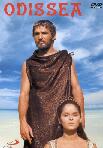 |
| Actor [Bekim Femihu] |
 |
| [Actor John Belushi] -right side- |
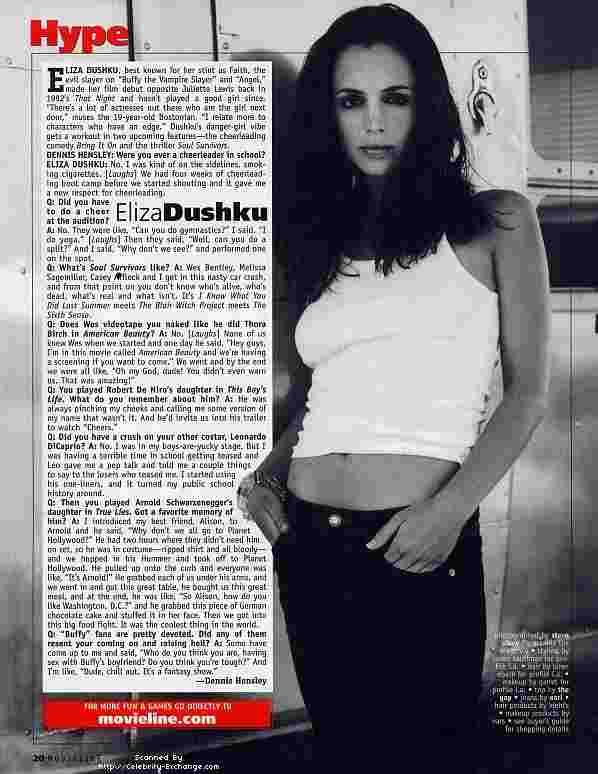 |
 |
 |
 |
| Carl Ghega [The Semmering Railrow] |
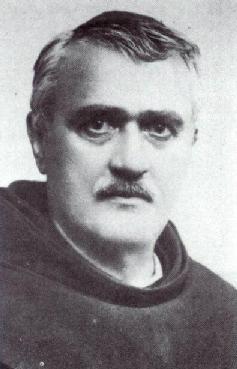 |
| [Gjergj Fishta] -Albanian Writer- |
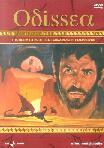 |
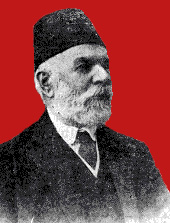 |
| [The Albanian Patriot and the person who gives independence day to Albania November 28th, 1912-Vlora] |
 |
 |
| [The Hollywood Actor- James Belushi the brother of John Belushi] |
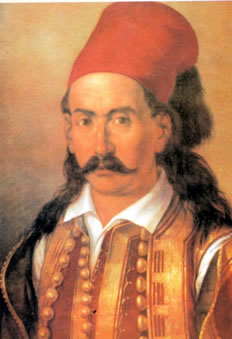 |
| [Marko Bocari- The Albanian General who's help the former base of Helenic State] |
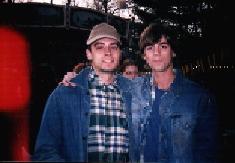 |
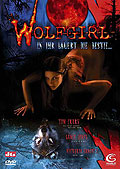 |
| [The Hollywood Actor Nate Dushku- The brother of actress Eliza Dushku] |
 |
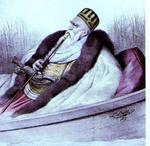 |
| [Ali Pashe Tepelena- The "Pasha" of Janina] (today in the territory og Greece) |
